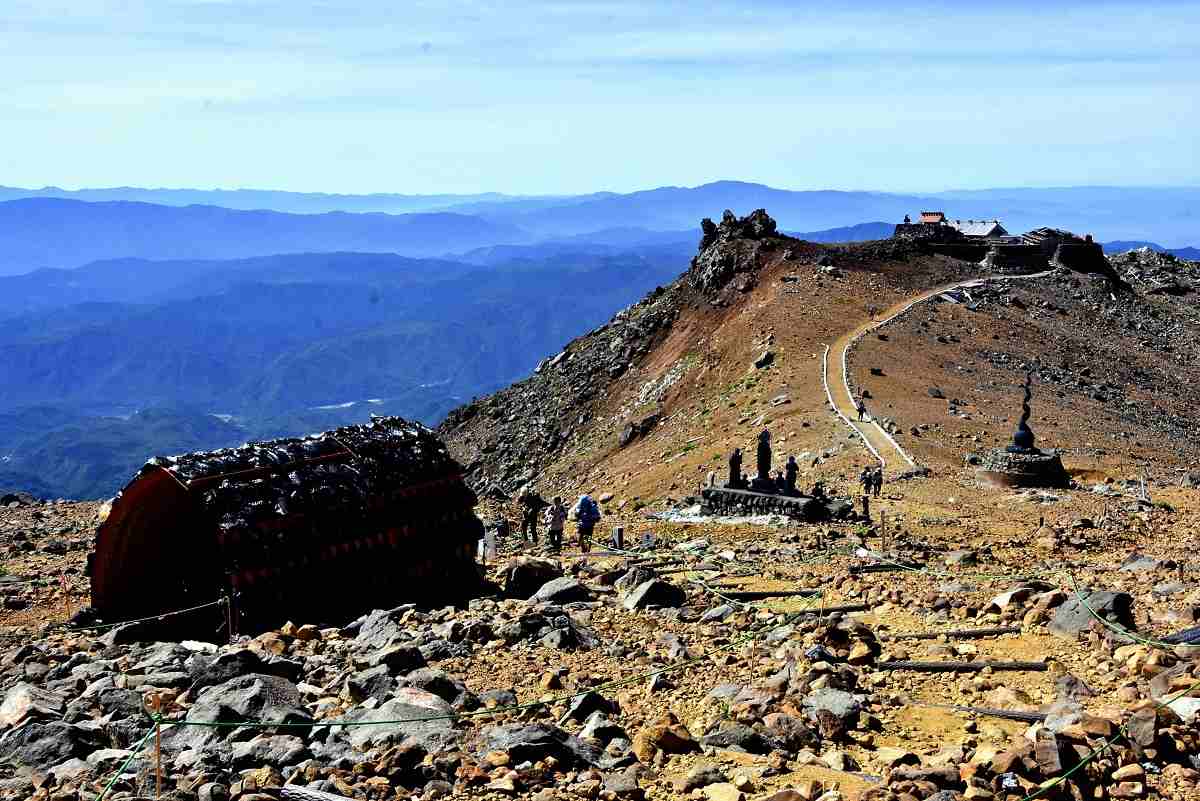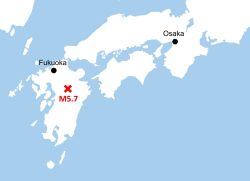A Decade after Mt. Ontake’s Eruption, Only 5 Prefectures Oblige Climbers to Submit Climbing Plans

A shelter is seen on Mt. Ontake on July 29.
6:00 JST, October 7, 2024
A decade after the volcanic eruption of Mt. Ontake, located on the prefectural border of Nagano and Gifu, only five out of 23 prefectures with volcanic disaster alert areas designated by the central government have ordinances that oblige climbers to submit their climbing plans to local authorities. The Yomiuri Shimbun has learned.
In response to the 2014 eruption, the government began obliging climbers to make efforts to submit their climbing plans under the revised law on Special Measures for Active Volcanoes.
Volcanic disaster alert areas are areas with 50 volcanoes that are continuously monitored by the Japan Meteorological Agency. As there is a concern that local residents and climbers may be affected at the time of volcanic eruptions, local authorities with such areas are required to establish alert and evacuation systems to be prepared for possible eruptions. The system was established following the Mt. Ontake eruption.
A government survey also found out that more than 40 percent of municipalities that are obliged to designate evacuation facilities under the revised law have failed to do so.
The findings revealed the disparity among local governments in the sense of crisis and measures that have been taken.
The volcanic eruption of Mt. Ontake claimed lives of 58 people and left five missing. As many climbers did not submit their climbing plans, authorities had difficulties to confirm unaccounted-for climbers and rescue them.
The government revised the law on Special Measures for Active Volcanoes in 2015, and obliged climbers to make efforts to submit their climbing plans and local governments to collect and grasp information on climbers. Revisions to the law in April this year specified information that needs to be collected by local governments, such as the day when climbers enter mountains and their climbing routes.
Prefectures of Nagano, Niigata, Gifu, Ishikawa and Yamanashi oblige climbers to submit their climbing plans in their ordinances. Following the eruption of Mt. Ontake, the Gifu prefectural government added active volcanoes to the list of “mountains with the risk of accidents” in its ordinance that requires climbers to submit climbing plans. Other four prefectures newly set up ordinances. Gifu, Ishikawa and Niigata prefectures’ ordinances include punitive clauses against those who fail to submit climbing plans and submit false plans.
Gunma and Toyama prefectures have ordinances obliging climbers to submit climbing plans, but they do not cover volcanoes. Remaining 16 prefectures have no such ordinances.
“There are volcanos people can casually climb, so it’s difficult to decide where to draw a line,” said an official of Tochigi Prefecture, where Mt. Nasu, one of monitored volcanoes, is located.
When the Law was revised in 2015, local governments also became obliged to designate facilities where climbers are able to evacuate in the event of volcanic eruptions. Out of 130 municipalities in 23 prefectures that had facilities that can be used for evacuation as of the end of March this year, only 72 municipalities, or 55 percent, have designated at least one facility, while 58 municipalities, or 45 percent, have designated none, according to the Cabinet Office.
Some local governments are apparently reluctant to designated such facilities out of consideration to local residents.
“There is a concern that [the designation] may trigger anxiety among local residents,” an official of Nagano Prefecture told The Yomiuri Shimbun.
“As there has been no sign of eruption, we’d like to avoid doing something that could fuel the sense of crisis,” said an official of Aomori Prefecture.
"Society" POPULAR ARTICLE
-

M4.9 Earthquake Hits Tokyo, Neighboring Prefectures
-

M7.5 Earthquake Hits Northern Japan; Tsunami Waves Observed in Hokkaido, Aomori and Iwate Prefectures
-

Israeli Tourists Refused Accommodation at Hotel in Japan’s Nagano Pref., Prompting Protest by Israeli Embassy and Probe by Prefecture
-

Tsukiji Market Urges Tourists to Avoid Visiting in Year-End
-

M5.7 Earthquake Hits Japan’s Kumamoto Pref., Measuring Upper 5 Intensity, No Tsunami Expected
JN ACCESS RANKING
-

Keidanren Chairman Yoshinobu Tsutsui Visits Kashiwazaki-Kariwa Nuclear Power Plant; Inspects New Emergency Safety System
-

Imports of Rare Earths from China Facing Delays, May Be Caused by Deterioration of Japan-China Relations
-

University of Tokyo Professor Discusses Japanese Economic Security in Interview Ahead of Forum
-

Japan Pulls out of Vietnam Nuclear Project, Complicating Hanoi’s Power Plans
-

Govt Aims to Expand NISA Program Lineup, Abolish Age Restriction

















